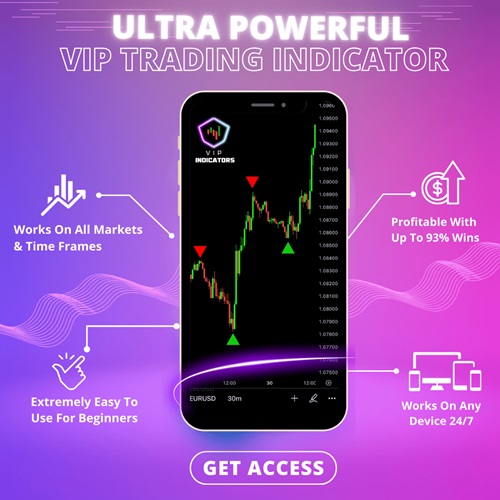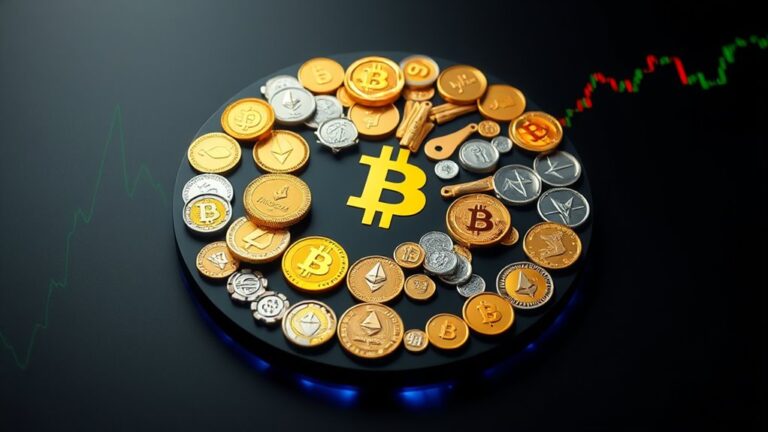Gold Bars in Cryptocurrency
Note: This post may contain affiliate links, and we may earn a commission (with No additional cost for you) if you purchase via our link. See our disclosure for more info. The gold and crypto world is constantly changing. This is not financial, investment, legal, or professional advice. So, please verify the information on the gold and cryptocurrency provider’s websites.
Gold bars are going digital with gold-backed cryptocurrencies. Think owning a piece of a gold bar without dropping thousands at once. Platforms like BullionGiant let you invest in tiny increments. These cryptocurrencies are backed by actual gold, stored and insured in vaults. Transactions are secure, thanks to SSL encryption—and, surprise, no hidden fees on some platforms. It's a blend of old-school gold with modern tech. Curious how it all works? There's more to explore.

Gold bars in cryptocurrency? It sounds like a wild mashup of old-school finance and new-age tech. But here we are, entering a world where gold can be tokenized. Let's break it down.
First off, there are various products out there. You've got GLC, which offers a micro-investment option at 1/1000 oz, making it a perfect fit for those who want to dip their toes in. Then there's PMGT, which is pegged at a 1:1 ratio with no fees. And if you're feeling particularly fancy, CTLX lets you buy gold in 1 gram increments.
Now, let's talk security—because who doesn't want their gold safe? These tokens are backed by physical gold stored in secure vaults, sometimes in Switzerland. SSL encryption is in place, which is a fancy way of saying they take your transactions seriously. Audits and transparency? Check and check. They're insured and audited. No surprises here, folks. Additionally, Tether Gold ensures regular audits to maintain confidence that the gold reserves match the total supply of tokens.
When it comes to security, these gold-backed tokens are no joke—insured, audited, and stored in top-notch vaults.
On the regulatory front, it's a bit like walking a tightrope. The FSOC reports keep an eye on the crypto-bank connections, but let's not get too bogged down in the details. Compliance through transparency is the name of the game. Most gold-backed cryptocurrencies aim to combine traditional stability with the innovative features of digital assets.
Payment methods are surprisingly easy. You can use Bitcoin, Ethereum, USDT, or USDC, and platforms like Radom make it seamless. Crypto payment options have become increasingly popular with companies like BullionGiant, who offer a straightforward checkout process. No extra fees, either—thank you, BullionGiant. Instant settlements are possible via blockchain, making it a much faster process than traditional gold markets.
So, who's playing in this space? BullionGiant, Tether Gold, GoldCoin, and Perth Mint are just a few players. They're all about making gold accessible via crypto. Tokenization allows for fractional ownership, which is a game changer. Imagine trading your gold tokens on exchanges!
In this strange new world, gold and cryptocurrency are shaking hands. Who would have thought?
Frequently Asked Questions
How Do I Store Gold Bars Linked to Cryptocurrency?
Storing gold bars? Easy, right? Not quite.
First, think safes. Home safes are fine, but don't get too comfy. Safety deposit boxes? Limited access and bank fees galore.
Bigger holdings? Go for professional vaults. Climate control, high security—sounds fancy.
Don't forget insurance; it's a must for protection.
And if you're mixing gold with crypto? Better have a plan for both. It's a wild ride, so buckle up!
Can Gold Bars Be Traded for Cryptocurrencies Directly?
Trading gold bars for cryptocurrencies directly? Not really a thing.
Sure, some platforms let you buy gold with crypto, but swapping them outright? That's a no-go.
You'd usually sell your gold for cash and then buy crypto. It's a bit of a hassle, honestly.
The golden dream doesn't translate neatly into digital coins.
So, if you're hoping for a straightforward trade, prepare for some disappointment.
It's not that simple, folks.
Are Gold-Backed Cryptocurrencies More Stable Than Regular Cryptocurrencies?
Gold-backed cryptocurrencies tend to be more stable than regular ones.
Why? Simple. They're tied to physical gold, which acts as a safety net.
No one wants to ride the wild rollercoaster of Bitcoin during a crisis.
Sure, they still feel some market jitters, but they usually avoid the extreme swings.
Think of them as the calm kid in the chaotic classroom.
In short, they offer a bit more peace of mind in a volatile world.
What Are the Tax Implications of Trading Gold Bars and Cryptocurrencies?
Trading gold bars and cryptocurrencies? Get ready for some tax fun!
Gold bars can hit you with capital gains taxes, especially if you sell them within a year.
Cryptos? They're a whole different beast. Sell or trade? Boom! Taxable event.
Short-term? Enjoy that ordinary income tax, which can sting. Long-term? Slightly better, but still a bite.
Both require tracking losses and gains. So, buckle up—it's a wild tax ride either way!
How Do I Verify the Authenticity of Gold Bars in Cryptocurrency?
Verifying gold bars? It's not rocket science, but it's no cakewalk either.
First, inspect those hallmarks and branding—if they're missing, run. Check the packaging; if it's tampered, alarm bells should ring.
Use a magnet—if it sticks, it's not gold. Weight matters too; if it feels off, something's fishy.
Don't forget the acid test; real gold laughs in the face of corrosion. Trust but verify, folks!












